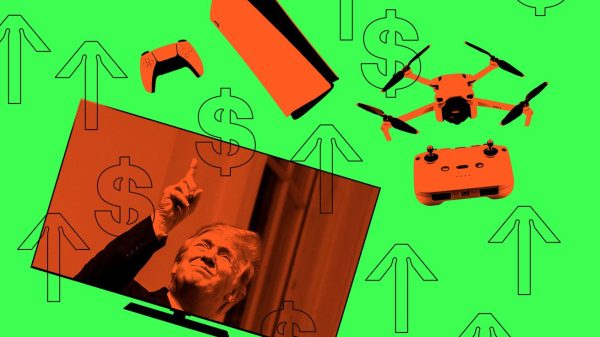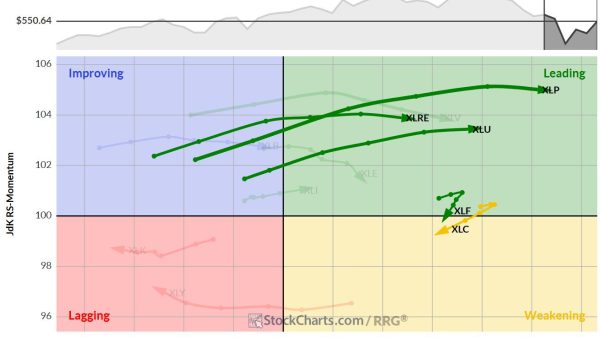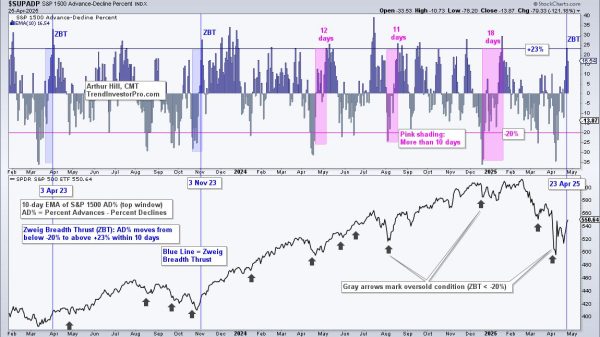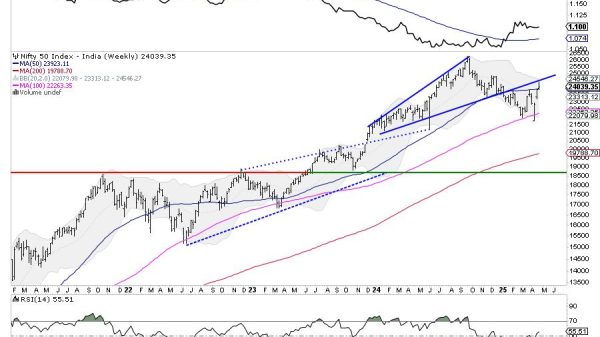Michael F. Cannon, Krit Chanwong, and Dominik Lett
Medicaid subsidizes medical care for low-income individuals and long-term care for many not-so-low-income individuals. After Social Security and Medicare, Medicaid is the nation’s third-largest government entitlement program. In 2025, states and the federal government are projected to spend $873 billion on Medicaid, exceeding discretionary funding for the Department of Defense.
States operate Medicaid with federal funding subject to federal rules. Those rules encourage states to expand their Medicaid programs’ enrollment, benefits, and spending, inflicting economic harm. Likewise, Congress expands Medicaid spending beyond what voters would prefer by financing its outlays with borrowing rather than taxes.
Along with Medicare, Medicaid is the main reason the federal government is hurtling toward a debt crisis. A debt crisis would trigger significant economic hardship and require drastic cuts to both programs. It is long past time for Congress to implement fundamental reforms to Medicaid.
Who Finances Medicaid and How?
The federal government contributes to every state’s Medicaid program by matching every dollar the state spends with anywhere from $1 to $9. Generally, poorer states get a higher Medicaid “match” than richer states.
Prior to Obamacare, Medicaid subsidized only low-income children, the disabled, pregnant women, and elderly individuals, with varying income requirements. The federal government matches every dollar states spend on these groups with up to three federal dollars. It determines the precise amount using the “Federal Medical Assistance Percentage” formula, or “the FMAP.”
Beginning in 2014, Obamacare allowed states to enroll all individuals earning below 138 percent of the federal poverty line (roughly $22,000 for a single adult and $44,000 for a family of four in 2025). That change expanded Medicaid eligibility chiefly to able-bodied, childless adults. Initially, the federal government covered 100 percent of those outlays. Today, it covers 90 percent: states get $9 from federal taxpayers for every $1 they spend on Obamacare’s Medicaid expansion.
Medicaid Creates a Precarious Fiscal and Economic Bubble
Because of Medicaid’s matching grant system, states have no incentive to cut wasteful or fraudulent Medicaid outlays and every incentive to increase both.
When Congress launched Medicaid in 1966, states furnished 52 percent of outlays. In 2025, states only had to furnish 25 percent of total Medicaid outlays. The reduction in states’ responsibility for Medicaid funding increases the willingness of state officials to expand the program. The moral hazard that Medicaid’s matching-grant system creates for state officials is one reason why real annual Medicaid spending has grown from $13 billion in 1966 to $873 billion in 2025.
Obamacare has helped to boost the federal share of Medicaid spending from 57 percent of total outlays in 2013 to 75 percent in 2025. Federal outlays on Medicaid have exploded over that period. Since 2021, the Congressional Budget Office has increased its projection of Medicaid’s 10-year cost by $1.2 trillion over baseline estimates.
Vast Amounts of Waste and Fraud
Medicaid’s matching-grant system also creates tremendous disincentives to eliminate waste and fraud.
Normally, eliminating $10 of wasteful government spending inflicts $10 of political pain on some constituencies but generates $10 of political benefit for others in the state (e.g., taxpayers). Even where government faces this dollar-for-dollar incentive, wasteful spending remains rampant.
Medicaid’s matching-grant system makes the situation immeasurably worse. If a state eliminates $10 of wasteful Medicaid spending, between $5 and $9 of the political benefit redounds not to the state but to the federal government. States, on the other hand, see no more than $5 of political benefit (and often as little as $1) from a $10 cut in Medicaid.
The result is unusually high levels of waste and fraud, even for a government program. For years, the Government Accountability Office has identified Medicaid as a high-risk program, with $31 billion in improper payments in 2023 and $500 billion in the past decade. The Paragon Health Institute’s Brian Blase and the Economic Policy Innovation Center’s Rachel Grezler argue that Medicaid’s improper payments over the last decade could total $1.1 trillion—double the government’s official estimate.
Medicaid’s Matching-Grant System Guarantees Scams
States use a variety of scams, as former President Joe Biden (D) described them, to nab even more federal funds. In some cases, states can secure federal funds without ultimately spending any money themselves.
One common scam is a “provider tax,” where the state spends $1 on Medicaid, uses that outlay to claim up to $9 from the federal government, then taxes some or all of that $1 back from hospitals or other health care providers. “‘Provider taxes,’” the Wall Street Journal explains, “are taxes in name only.” Rather, they are a shell game whose purpose is to give the supposed taxpayer access to large government subsidies. Provider-tax scams abuse Medicaid’s matching-grant system by allowing states to foist even more of the cost of their Medicaid programs onto taxpayers in other states.
When states are running provider-tax scams, cutting $10 of wasteful Medicaid spending can result in even less than $1 in savings to the state.
Medicaid’s matching-grant system makes such scams inevitable. Congress’s many attempts to crack down on provider taxes keep failing because Congress is not addressing the root cause. Figure 1 provides data suggesting that such scams may even be growing despite those efforts.
Zero-Growth Block Grants
Medicaid’s matching-grant funding system renders the program fundamentally fiscally unsound. Runaway spending will persist under any reform that preserves Medicaid’s system of matching federal grants, in part because that system would continue to offer states opportunities to abuse the program. The only way to eliminate those opportunities is to convert Medicaid to a system of block grants.
Congress should combine federal Medicaid, CHIP, and Obamacare funding into a single block grant that the federal government distributes to each state. The amount that states receive would not rise or fall with state actions. Block grants would, therefore, end the scams that have contributed to wasteful and fraudulent Medicaid spending.
Block grants could deliver any level of savings Congress desires. Congress should set the total amount of federal Medicaid, CHIP, and Obamacare funding at the level the Republican Study Committee has proposed: $342 billion for 2026. Congress should set the growth rate of this funding stream at zero percent. Each year, in aggregate, states would receive $342 billion. Whereas the House Republicans’ budget resolution would merely reduce the rate of growth in federal Medicaid spending from 4.5 percent to 3 percent, this proposal would actually cut federal spending by $5.6 trillion below the CBO’s current-law baseline. It would reduce “primary” federal deficits (i.e., deficits excluding interest payments) by 61 percent over the next decade. It would eliminate the primary deficit by 2035. Even with these significant cuts, however, Congress would still have to take additional steps to balance the federal budget.
If it turns out that voters actually support current-law Medicaid, CHIP, and Obamacare spending levels, then states can simply raise taxes to replace any federal funds they lose. To the extent that states do not replace those federal funds, however, it indicates that current spending levels on these programs are unpopular with voters. Contrary to the claims of Medicaid supporters, that prospect is a reason why Congress should cut federal Medicaid funding. Democracies should not fund unpopular government programs.
Lesser Medicaid Reforms
Far less appealing would be reforms that give states a fixed amount per Medicaid enrollee. Such a system would perpetuate incentives for states to pursue additional federal Medicaid funds by increasing enrollment. Nonetheless, according to CBO estimates, per capita grants could deliver anywhere from $459 to $893 billion in 10-year net savings below current-law baseline projections. Canada enacted a similar policy of distributing funds from the national government to provinces. Within one decade, the policy reduced the federal proportion of health spending by half.
Less appealing still, though still worthwhile, would be to reduce the Medicaid expansion’s “enhanced” matching rate from 90 percent to the state’s underlying FMAP rate. FMAP rates currently range from 50 percent to 76.9 percent. This change would marginally reduce states’ incentives to increase Medicaid spending via provider taxes and other scams. The CBO estimates that this reform could produce meager net savings of $607 billion over 10 years.
Another worthwhile change would be to remove the “floor” on FMAP rates. Under current FMAP rules, states receive a minimum of $1 from the federal government for every dollar they spend on Medicaid. Removing the FMAP “floor” would reduce that amount below $1 for certain high-income states. Those states would then have to pay for a larger share of their Medicaid decisions. This change could strengthen incentives for the wealthiest states with the most expensive programs (California, New York, Massachusetts, etc.) to control Medicaid spending growth. Per CBO, this reform could generate $530 billion in savings over the next decade.
If Congress fails to eliminate matching grants, it should undertake serious reforms to end all Medicaid financing scams. The CBO estimates that even modest reforms could lead to net savings of $612 billion from 2025–2034. Congress should attempt such reforms even if past efforts do not inspire hope.
Anything short of block grants, however, would preserve the structural flaws that cause Medicaid to hurtle the federal government toward a wrenching debt crisis that would threaten access to care for all Medicaid enrollees.























